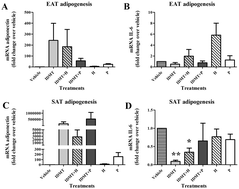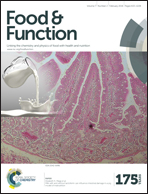Sea cucumbers with an anti-inflammatory effect on endothelial cells and subcutaneous but not on epicardial adipose tissue
Abstract
Objective: epicardial adipose tissue (EAT) from patients with coronary artery disease (CAD) contains higher levels of inflammatory proteins and lower adiponectin levels than subcutaneous adipose tissue (SAT), enhancing the progression of atherosclerosis. Since products from sea cucumber have anti-inflammatory properties, we investigated its effect on EAT, SAT and endothelial cells. Methods: stromal cells or explants from EAT and SAT were obtained from patients with cardiovascular disease. Extracts were obtained after hydrolysis by food-grade enzymes at different times. Proteins were identified by LC-MALDI mass spectrometry. Adipogenesis and adiponectin induction were determined on stromal cells in the presence/absence of extracts. The bioavailability of the extracts was tested on a Caco-2 cell culture model in vitro. The bioavailable fraction was probed on endothelial cells and EAT or SAT explants. Vascular cell adhesion protein (VCAM-1), intercellular adhesion molecule (ICAM-1), IL-6 and adiponectin were determined by real time polymerase chain reaction (RT-PCR). Results: our results showed that H. forskali and P. tremulus extracts contained compounds with anti-oxidant and anti-inflammatory properties. The bioavailable fraction of P. tremulus reduced VCAM-1 (p < 0.01) and IL-6 (p < 0.05) expression levels in endothelial cells while bioavailable compounds from H. forskali decreased ICAM-1 expression in SAT (p < 0.05). No effect was observed on EAT. Conclusion: these results suggest that sea cucumber extracts might be used for the prevention of endothelial cells and SAT inflammation.


 Please wait while we load your content...
Please wait while we load your content...